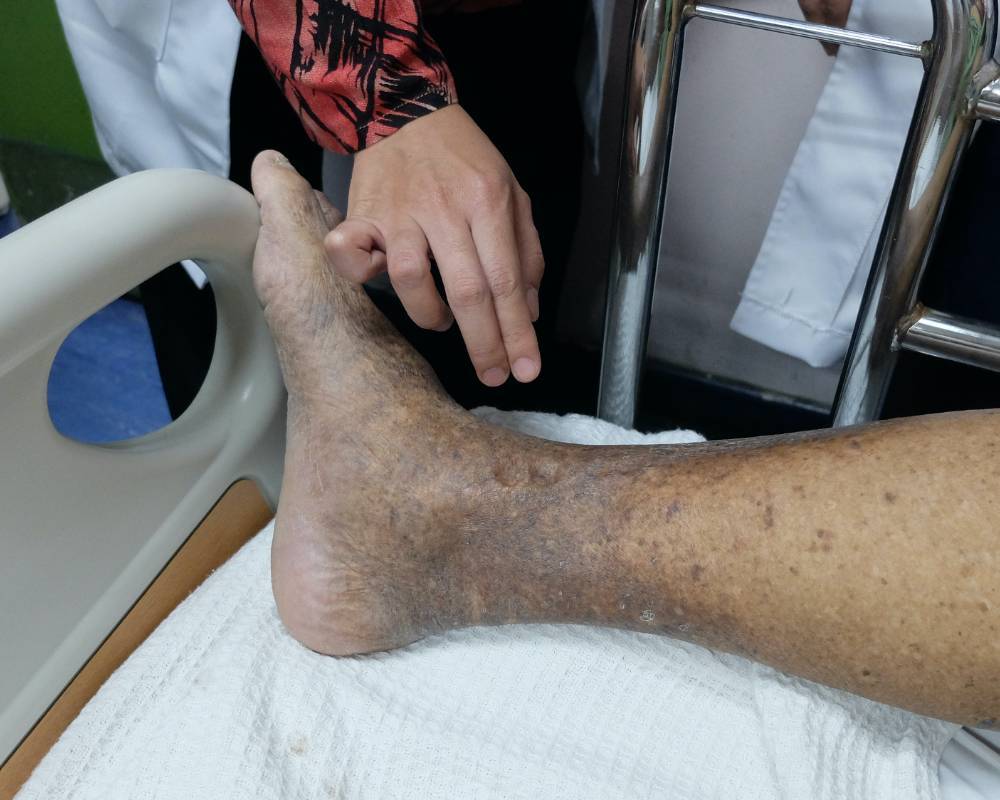Peripheral Artery Disease: Understanding, Management, and Prevention
**Introduction**
Peripheral artery disease (PAD) is a common circulatory problem in which narrowed arteries reduce blood flow to your limbs, primarily your legs. While PAD often manifests with symptoms in the legs, it can also affect blood flow to the arms, stomach, and head, though less frequently. It's a potentially serious condition that requires medical attention and lifestyle modifications for effective management. In this comprehensive guide, we will delve into the causes, symptoms, diagnosis, treatment options, and prevention strategies for PAD.
**Understanding Peripheral Artery Disease**
Peripheral artery disease typically develops due to atherosclerosis, a condition in which fatty deposits (plaque) build up on the inner walls of the arteries, causing them to narrow and stiffen. This narrowing restricts blood flow to organs and tissues throughout the body, including the limbs.
Atherosclerosis itself is a systemic condition, meaning it can affect arteries in various parts of the body. However, when it primarily affects the arteries supplying the legs, it leads to PAD. The reduced blood flow deprives the muscles of oxygen and essential nutrients, resulting in symptoms such as pain, cramping, and weakness, particularly during physical activity.
**Symptoms of PAD**
The symptoms of peripheral artery disease can vary from person to person and depend on the severity of arterial blockage. Some common signs and symptoms include:
1. **Claudication**: This is the most common symptom of PAD. Claudication refers to pain, cramping, or weakness in the legs, especially during physical activity like walking or climbing stairs. The discomfort typically subsides with rest but returns upon resuming activity.
2. **Numbness or Weakness**: Reduced blood flow can cause numbness, weakness, or a feeling of heaviness in the affected leg muscles.
3. **Coldness or Discoloration**: The affected limb may feel cold to the touch, and the skin may appear pale or discolored.
4. **Poor Wound Healing**: Due to inadequate blood flow, wounds or sores on the feet or legs may take longer to heal.
5. **Impotence**: In men, PAD may manifest as erectile dysfunction, as it affects blood flow to the genitals.
**Diagnosis of PAD**
Diagnosing peripheral artery disease typically involves a combination of medical history assessment, physical examination, and specialized tests. Your healthcare provider may:
1. **Conduct a Physical Examination**: This may involve checking your pulses at various points in your body, examining your legs for signs of poor circulation, and evaluating any symptoms you're experiencing.
2. **Ankle-Brachial Index (ABI) Test**: This non-invasive test compares the blood pressure in your ankles with the blood pressure in your arms. A lower ankle pressure indicates poor circulation in the legs, suggesting PAD.
3. **Ultrasound**: Doppler ultrasound uses sound waves to create images of blood flow within the arteries. It can help identify blockages or narrowing in the arteries.
4. **Angiography**: In some cases, a more detailed imaging test such as angiography may be necessary to visualize the arteries and identify blockages.
**Treatment Options**
The goal of treatment for peripheral artery disease is to relieve symptoms, improve quality of life, and reduce the risk of complications such as heart attack and stroke. Treatment options may include:
1. **Lifestyle Modifications**: Making healthy lifestyle changes is often the first line of defense against PAD. This may include quitting smoking, adopting a healthy diet low in saturated fats and cholesterol, exercising regularly, and maintaining a healthy weight.
2. **Medications**: Your doctor may prescribe medications to manage symptoms and reduce the risk of complications. This may include antiplatelet drugs to prevent blood clots, cholesterol-lowering medications, and medications to control blood pressure and blood sugar levels.
3. **Angioplasty and Stenting**: In cases where arterial blockages are severe, a minimally invasive procedure called angioplasty may be performed. During angioplasty, a thin tube with a balloon on the end is inserted into the blocked artery and inflated to widen the artery. A stent (a small mesh tube) may be placed to help keep the artery open.
4. **Surgery**: In some cases, bypass surgery may be necessary to reroute blood flow around the blocked artery, restoring circulation to the affected limb.
5. **Exercise Rehabilitation**: Supervised exercise programs, such as walking programs, can help improve symptoms and increase walking distance in individuals with PAD.
**Prevention Strategies**
While some risk factors for peripheral artery disease, such as age and family history, are beyond our control, there are several steps you can take to lower your risk and prevent PAD:
1. **Quit Smoking**: Smoking is one of the most significant risk factors for PAD. Quitting smoking can dramatically reduce your risk and improve your overall cardiovascular health.
2. **Manage Chronic Conditions**: Keep conditions such as high blood pressure, high cholesterol, and diabetes under control through lifestyle changes and, if necessary, medication.
3. **Eat a Healthy Diet**: Focus on a diet rich in fruits, vegetables, whole grains, and lean proteins. Limit your intake of saturated fats, trans fats, cholesterol, and sodium.
4. **Exercise Regularly**: Aim for at least 30 minutes of moderate-intensity exercise most days of the week. Exercise helps improve circulation and overall cardiovascular health.
5. **Maintain a Healthy Weight**: Being overweight or obese increases your risk of PAD. Aim to achieve and maintain a healthy weight through a combination of diet and exercise.
6. **Manage Stress**: Chronic stress can contribute to poor cardiovascular health. Practice stress-reducing techniques such as meditation, deep breathing exercises, or hobbies you enjoy.
**Conclusion**
Peripheral artery disease is a common circulatory problem that can significantly impact your quality of life if left untreated. By understanding the risk factors, symptoms, diagnosis, and treatment options for PAD, you can take proactive steps to manage the condition and reduce your risk of complications. Remember, early detection and intervention are key to effectively managing peripheral artery disease and maintaining your overall health and well-being. If you experience any symptoms suggestive of PAD, don't hesitate to consult your healthcare provider for evaluation and guidance.


